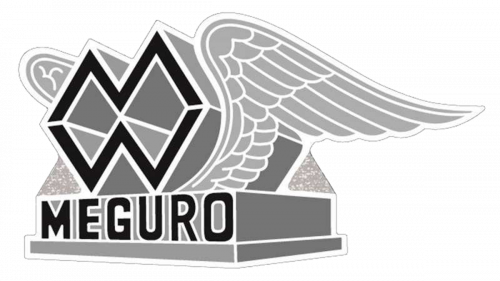
Today you can surprise no one with a motorcycle in Japan, as being an island country, it has a lot of people using a bike as the only vehicle. Though for a long time a motorcycle in Japan was considered to be a toy of the rich, remaining virtually inaccessible to the majority of the population. In the pre-war years, production of motorcycles grew slowly from 1 350 units in 1930 to only 3 thousand in 1940. The quality and technical level were in line with this slow growth: the 1937 Meguro Z97, a copy of the British 500 CC Velocette, developed only 13 hp against the 19 hp of its prototype.
Production of motorcycles in the first postwar years remained small: 500 in 1946, 1000 and then 2633 in 1950. But in 1960 the country has already reached a one million milestone. A very impressive growth.
At first, the bikes from Japan were considered to be cheap copies of foreign, mainly European, motorcycles. However, today they are already the most technologically advanced and fastest bikes in the world.
Japanese motorcycles have long occupied leading positions in the world market and easily win sports competitions. The most popular brands of the Japanese motorcycle industry are Honda, Suzuki, Kawasaki, and Yamaha. At the moment there is not a single person who has not heard of these brands. It is difficult to name the best Japanese motorcycle. However, the fastest so far is the Suzuki Hayabusa, capable of speeding up to 325 km/h.
Yamaha

Founded: 1 May 1955
Headquarters: Iwata, Shizuoka, Japan
Owners: Yamaha Corporation (9.92%), Toyota (3.58%)
Subsidiaries: Minarelli, MBK
Website: global.yamaha-motor.com
Today YAMAHA Motor is the world’s largest and best-known manufacturer of motorcycles, as well as all-terrain vehicles, snowmobiles, boats, and boats. The homeland of this company in Japan. Officially the history of YAMAHA Motor begins in 1955. But the company is a subsidiary of another Japanese giant – Nippon Gakki, which eventually changed its name to the last name of the founder of the empire – YAMAHA.
Today, in terms of production volumes the brand is second only to its eternal rival, the brand Honda. The factory facilities of YAMAHA Motor are located in 45 countries around the world, employing more than 100 thousand people.
Honda

Founded: October 1946
Founder: Soichiro Honda, Takeo Fujisawa
Headquarters: Minato, Tokyo, Japan
Website: global.honda
Today Honda is one of the most popular motorcycle manufacturers in the world, known for the height quality of its bikes and a wide distribution net. Spectacular appearance, engine power, reasonable weight and size of the equipment, as well as low fuel consumption – all this has become a characteristic feature of many models of Honda motorcycles.
In 1937, Soichiro Honda founded the company Tokai Seiki Heavy Industry, producing the piston rings he had invented himself. After World War II, it was almost destroyed, and Honda sells the surviving remnants to automaker Toyota. With the money he got from Toyota, he founded the Honda Technical Research Institute, which he renamed the Honda Motor Company in 1948.
The new company’s first line of business was to install small motors from gasoline generators left over from the war on bicycles. Such a vehicle was popular among the population, which could not shell out money for something more presentable. The bicycles are known as the Honda Model A.
Suzuki

Founded: October 1909
Founder: Michio Suzuki
Headquarters: Hamamatsu, Shizuoka, Japan
Website: www.globalsuzuki.com
Suzuki Motor Corporation is a Japanese multinational corporation. It produces automobiles, four-wheelers, motorcycles, all-terrain vehicles, outboard marine engines, wheelchairs, and internal combustion engines.
In 1909, Michio Suzuki founded the Suzuki Loom Company and opened a loom factory in the small seaside village of Hamamatsu, Japan. Business flourished, Suzuki supplied looms to Japan’s giant silk industry.
Suzuki’s first two-wheeled vehicle was a bicycle with an engine called the Power Free. Designed to be inexpensive and easy to assemble and maintain, the 1952 Power Free had a 36cc two-stroke engine. The patent office of the new Democratic government gave Suzuki a financial subsidy to continue research into motorcycle design. By 1954, Suzuki was producing 6,000 motorcycles per month. In 1954, the company changed its name to Suzuki Motor Co.
Kawasaki

Founded: 15 October 1896
Founder: Shōzō Kawasaki
Headquarters: Chūō, Kobe, Japan; Minato, Tokyo, Japan
Parent company: Kawasaki Heavy Industries
Website: global.kawasaki.com
The history of the Kawasaki Corporation dates back to 1887. That was when businessman Shozo Kawasaki founded the Kawasaki Tsukiji Shipyard in Japan.
The founder of the company had extensive experience traveling the seas and oceans. Kawasaki was able to see that the European seafaring nations understood much more about shipbuilding than the Japanese. That is why he concluded that there is a reason to apply European principles of shipbuilding in Japan. In 1896, the company was renamed the Kawasaki Dockyard Co.
The first Japanese submarine was built in 1906 at Kawasaki Shipyards. In 1922, the company built its first airplane.
The Kawasaki Motorcycle Corporation division was established in 1963. Then Kawasaki absorbed Meguro, which produced motorcycles. So the cooperating companies merged and achieved new results. So that motorcycles became the symbol of Kawasaki.
At present, the Kawasaki corporation includes many divisions. And not only in Japan. The whole world is known for the company’s motorcycles, planes, and ships. The headquarters of Kawasaki Heavy Industries is located in the Japanese capital of Tokyo.
Abe-Star

Bridgestone

Hodaka

Marusho

Meguro

Rikuo

